✨You Can Touch the Times Square New Year's Eve Ball!
Find out how you can take home a piece of the old New Year's Eve ball!


College Point is a diverse neighborhood in northern Queens, located north of Flushing and west of Whitestone. The neighborhood is often considered one of the most isolated in the borough because of the Whitestone Expressway and the lack of subway service nearby. The area was mostly rural until the mid-1850s when rubber factories and other industrial operations moved into the area. Many historic properties from the late 1800s still stand along or near College Point Boulevard, including the old Haefele’s Hotel from 1880. The neighborhood was even a resort town for a few decades, though much of College Point‘s waterfront property is now rather industrial. Today, the area is quaint and filled with parks and green spaces including Powell’s Cove Park, which offers views of the Whitestone Bridge. Here is our guide to the top 14 secrets of College Point.
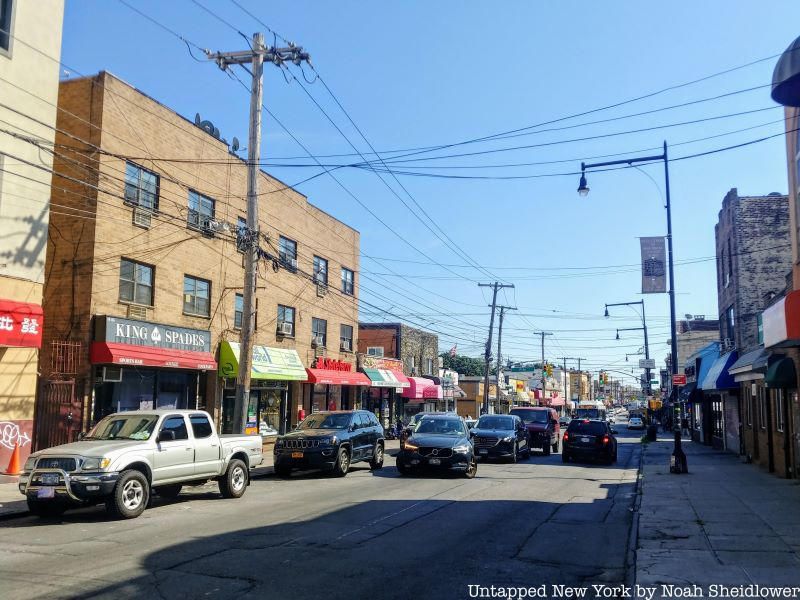
With the exception of the New York City Police Academy, there are no colleges in College Point — and there hasn’t been a college there in decades. This begs the question, why is the neighborhood called College Point? It turns out a college once existed there, but it opened in 1835 and shuttered by 1850. The center for education, St. Paul’s College and Grammar School, was a seminary founded by Reverend William August Muhlenberg and is often considered the father of American church schools. The school aimed to train missionaries and teachers. Muhlenberg also founded St. Luke’s Hospital, now Mount Sinai Morningside. While serving as rector for Flushing’s St. George’s Church, he led construction on the seminary, incorporating pink and white marble.
The school struggled from the start. The Panic of 1837, which sparked high unemployment and lower wages, made it difficult for Muhlenberg to endow the college or even find enough students, meaning that he could not charter the school. No student could receive a bachelor’s degree, so enrollment stalled in hopes that the economy would improve. Unfortunately, Muhlenberg’s project was unsuccessful, despite his success with schools across Long Island, and he moved from New York City in 1847; the school shuttered just 15 years after it opened in 1850. Few remnants of the school remain, but the neighborhood has retained the name for nearly two centuries.
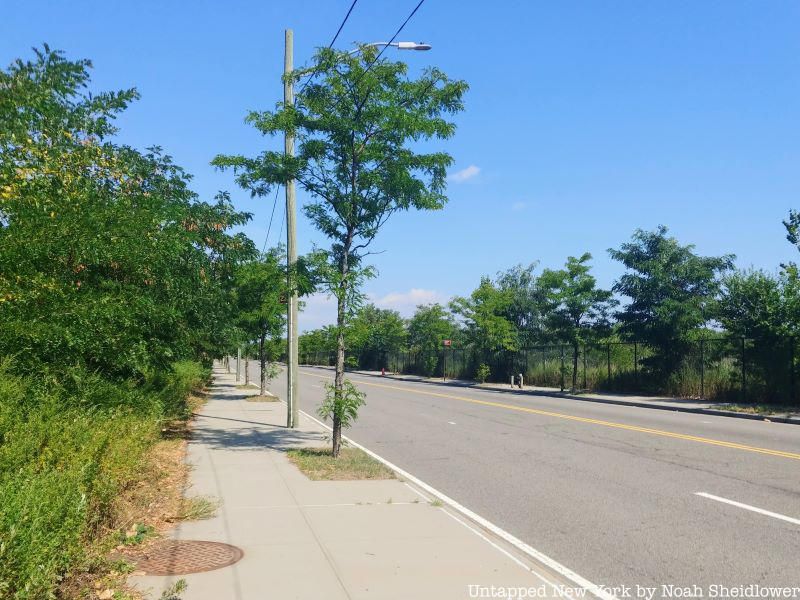
For 55 years, College Point hosted one of New York City’s busiest airfields and a bustling airport. Today, most of the former property sits deserted, with many development proposals falling flat. Construction began in 1927 on top of 250 acres of wetlands, opening in 1929 and quickly becoming one of the central travel hubs of New York City. Speed’s Airport, as it was called, was one of the area’s go-to airports in the 1930s before LaGuardia Airport opened in 1939; into the 1940 and 1950s, Speed’s was a significant rival to the other Queens-based airport. Speed’s mostly served smaller planes and helicopters, and even a Goodyear blimp would make stops here.
In 1977, the airport’s reputation was damaged when a Piper Twin Comanche crashed after taking off, killing everyone on board. Poor infrastructure, which would cause frequent flooding, alongside the growth of LaGuardia, forced Flushing Airport to close in 1984. There have been few efforts to save the original structures, and many became abandoned; the land even became wetlands again. A few companies and organizations have advocated for restoring some of the property, including converting the airport into a blimp port, though many of the hangars were recently demolished. Fears of traffic increases have motivated the rejection of plans to revitalize the area. Mayor Bloomberg even tried making this into a park in 2013, though locals thought the location of the would-be park was inconvenient.
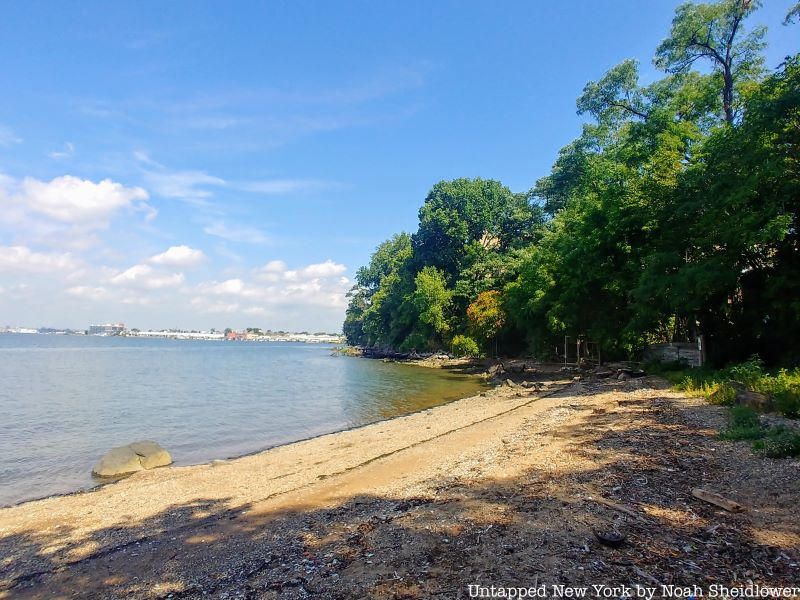
Big Rock Beach is likely a name that most New Yorkers won’t recognize. At the end of 28th Avenue in a rather industrial part of College Point is a somewhat polluted stretch of beach marked by nothing but a small pathway. Decades ago, the beach was thriving and crowded every day during the summer, with many visitors taking photos on the namesake Big Rock. Beachgoers had clear views of LaGuardia Airport and could see the Manhattan skyline in the distance. Years later, the beach would be mostly forgotten, cluttered with plastic bottles, tires, and wrappers. For many years, there was also a rusted-out rig, and there still stands the remains of a lifeguard stand.
For the past two decades, an organization called Coastal Preservation Network has worked to clean up College Point’s coastline, and improvements have already been made this year on Big Rock Beach. An abandoned deck barge was removed, and an obscured staircase has been stabilized so more people could visit. Earlier this year, crews assembled to remove much of the debris, and efforts have been underway to reduce illegal dumping and protect the reef and wildlife. While the beach is still quite polluted today, it is a massive improvement from what it was just a few years ago, and it remains one of the best places to catch a sunset in the area.
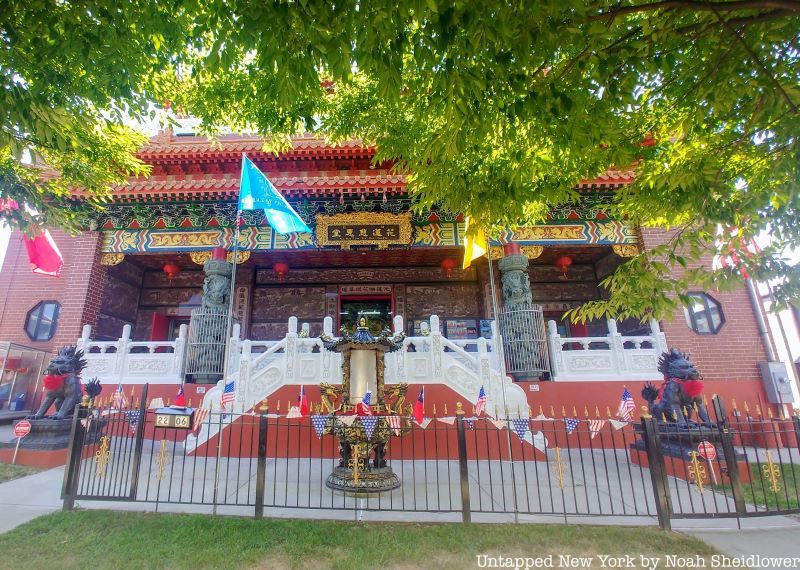
College Point has a developing Chinatown centered around College Point Boulevard with a handful of Chinese eateries. On its border with Whitestone is the headquarters of the Chinese newspaper World Journal. College Point has a significant Taiwanese community, as evidenced by the small roadway Taiwan Court near Hermon A. MacNeil Park. Another Taiwanese site is the Daoist New York Hua Lian Tsu Hui Temple on 121st Street and 22nd Avenue, which features ornate decorations and statues imported from Taiwan. Many Chinese-owned clothing and dollar stores line College Point Boulevard as well.
Among culinary options, Little Pepper is a staple of College Point, serving Sichuan fare like sliced fish in a spicy soup, griddle-cooked shrimp, and Sichuan double-cooked pork. Just up the road is Long King House, a Shanghainese eatery with a selection of dim sum, skewers, and seafood options. J&K Gourmet offers $7 buffet table lunch specials as well as Wenzhounese fare as well. A bit further east is a building that houses Fish Village, a Hong Kong-style eatery with a selection of seafood options like sea cucumber, lancelet, and turtle. On the fourth floor is The Buffet, which serves upscale Chinese classics buffet-style in addition to Pan-Asian and American-style options.
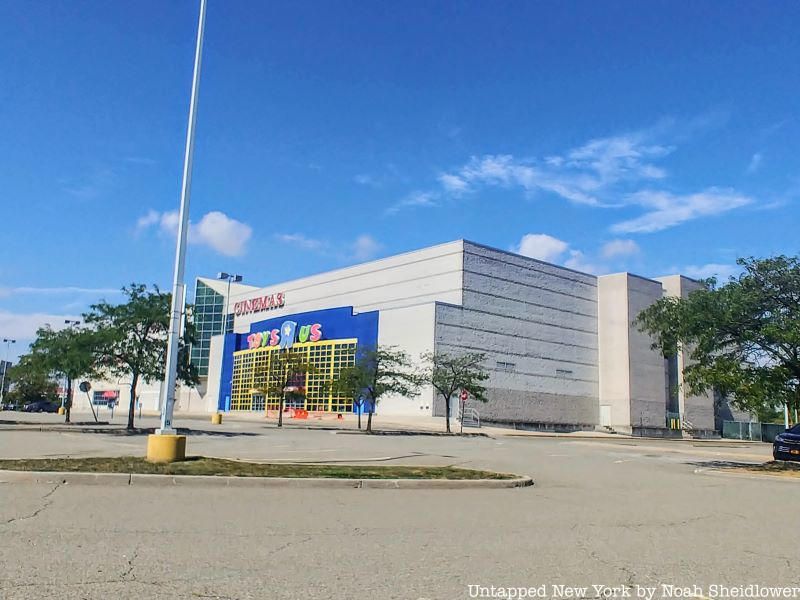
Operating from the mid-1950s until the late-1970s, Adventurer’s Inn on Linden Place was one of Queens’ most popular amusement parks. Located off the Whitestone Expressway near the College Point Multiplex, Adventurer’s Inn was the only amusement park in Northern Queens after the closure of Kiddy City and Fairyland Park in the 1970s. Originally called Adventure Park, the amusement park had no standard schedule and just a handful of rides and mini golf, but over the next decade, it expanded significantly. Notable rides included the Batman Slide, the Rotor, and the Toboggan.
Adventurer’s Inn’s expansion would be rather short-lived as the city developed plans to convert the amusement park into an industrial park by the early 1970s. Many efforts were taken by the Public Development Corporation to close the park down, yet it remained open until 1978, despite a fire and a park shooting. Just a few years later, Flushing Airport right next door shut down as well, leaving much of the area empty and in need of redevelopment.
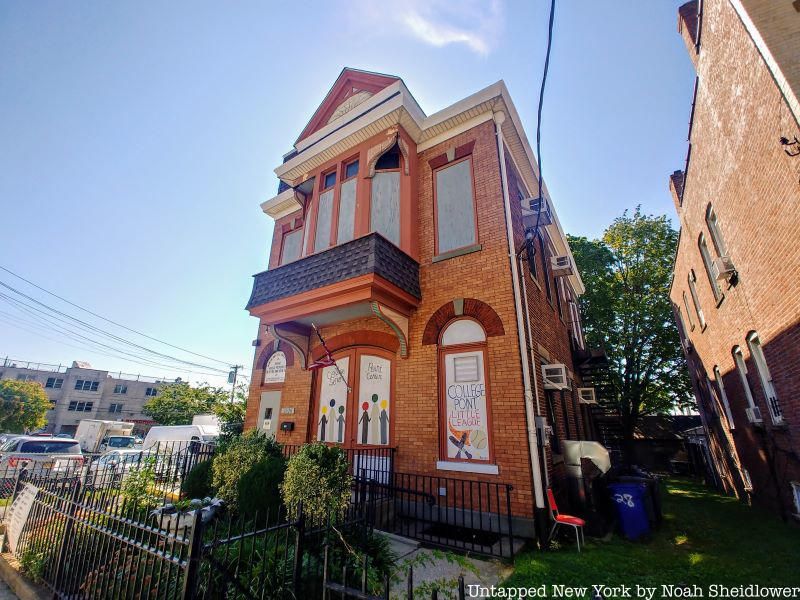
The College Point Little League building serves as a meeting and social hall today, but when it was built in 1907, it was the headquarters for the Exempt Firemen’s Benevolent Association of College Point. The two-story brick building was constructed in the Queen Anne style and features a hipped roof. It is currently listed on the National Register of Historic Places, meaning it has recently undergone repairs to preserve its history. Two original objects were preserved: a bell that used to hang inside and an early hand-pulled fire engine.
Located at 13-28 123rd Street, the building housed fire equipment at first and was a place for local firemen to socialize. Though, once the city was incorporated, volunteer firehouses were mostly rendered obsolete, since the city established paid fire companies. Still, social gatherings were held here well into the 1940s, even after organizations like the American Legion and a local Taxpayers Association held meetings here. The Little League bought the building in the 1970s.
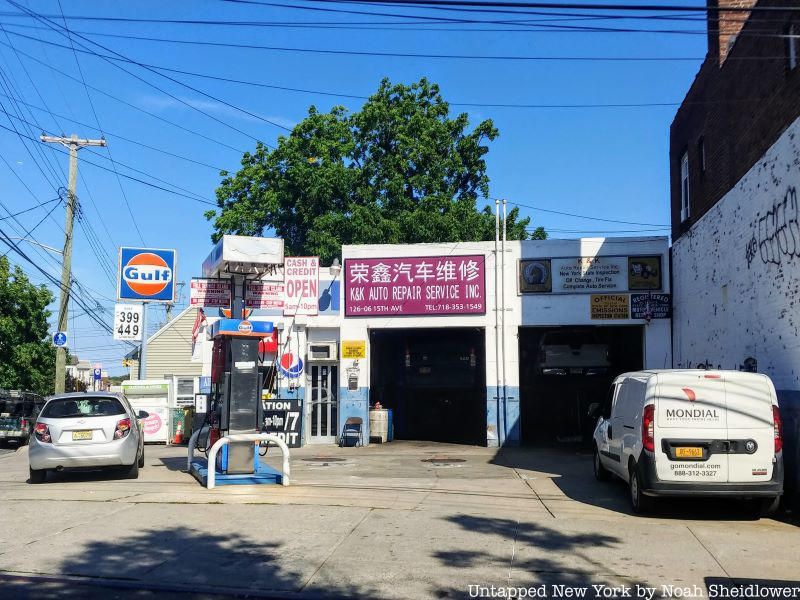
Farrington’s Service Station appeared to be an unassuming gas station on 15th Avenue, but it was actually New York’s oldest Gulf gas station and likely the oldest gas station in Queens. Today, it remains a Gulf station, though a new company called K&K Auto Repair Service has taken over the space. Farrington’s opened in 1868, nearly two decades before the first car was manufactured. It was owned by the same family since its opening, started by William Farrington as a blacksmith shop for horseshoes and horse feed; the family dates back to the 17th century when New York was New Netherland.
The store was a go-to at the time for racing horseshoes, as Farrington himself owned several racehorses. It wasn’t until 1917, though, that the station began pumping gas as New York City transitioned from horse-drawn vehicles to automobiles. The station continued pumping gas for over a century, although heightened oil costs posed some challenges. Much of the building’s history had been preserved through dozens of photographs inside documenting the shop’s transformation, especially during College Point’s resort era. Some of the original horseshoes were on display, and some of the original imagery remains on the exterior of the building today, including artworks of a horse and an early automobile.
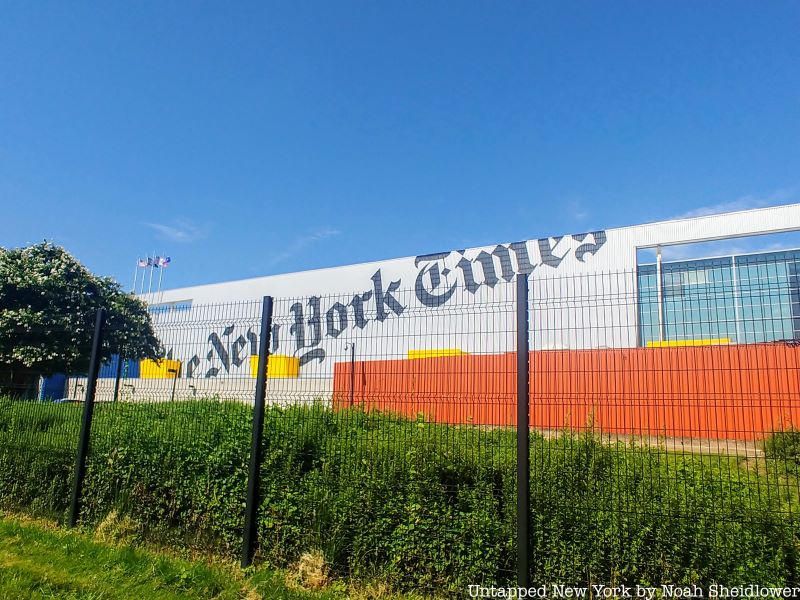
The New York Times prints thousands upon thousands of copies of its newspapers every day at its printing plant in College Point along the Whitestone Expressway, just a short drive from the former Flushing Airport. The paper’s original facility was located in Brooklyn, which was where the public could get a glimpse of everything from the actual printing to the collating and folding procedures. The facility opened in 1997 with six presses and plenty of storage space. Though, only about 41 percent of papers are produced in College Point; the rest are printed at 26 other locations across the country.
Photos inside the facility show rolls of newspaper print 10 miles long, enough for 30,000 newspapers. These rolls are transported throughout the facility and between the two floors using robotized vehicles. Combined, the press towers at the facility print over 200,000 papers a day. Metal pipes allow for the transport of ink from larger containers. There are also proofing tables with rulers to measure the correct lengths and widths of columns. One important room is the plates room, where the plates for the presses are custom-made; they are then stored on a nearby wall and sent to the presses shortly after. In addition to large packing rooms, the facility also holds a high-tech control room that manages all operations.
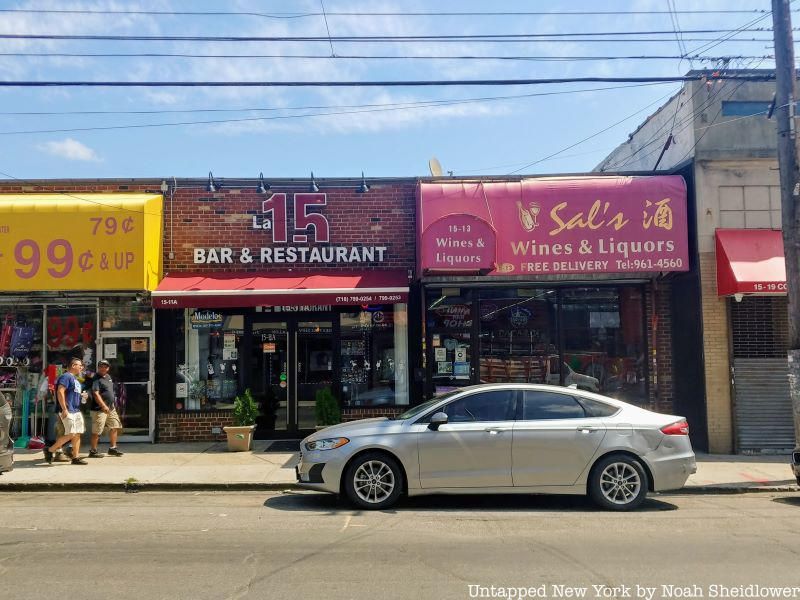
In the early 1900s, College Point was a destination for brewing in New York City alongside Ridgewood, both of which had large German populations. The New York Times called College Point “the city’s German-beer-hall capital,” citing places like the Five Corners which opened in 1948 and was known for German brandy and ceramic plaques. Beer gardens, breweries, hotels, and casinos were everywhere in College Point in the early 1900s.
A popular brewery at the time was Karsch Brewery at 14th Road and 120th Street. The Academy Mailbox & Intercom Company building on 15th Avenue, which still stands, used to be an ice house where a nearby brewery would chill its beers. Joseph Witzel’s Point View Island, a popular summer resort, attracted 15,000 visitors a day and sold hundreds of beers in its beer garden. Others from as early as the 1870s included Weber’s Brewery and the straightforwardly named College Point Brewery. Some of these breweries were opened by those employed by Poppenhusen and had German ancestry.
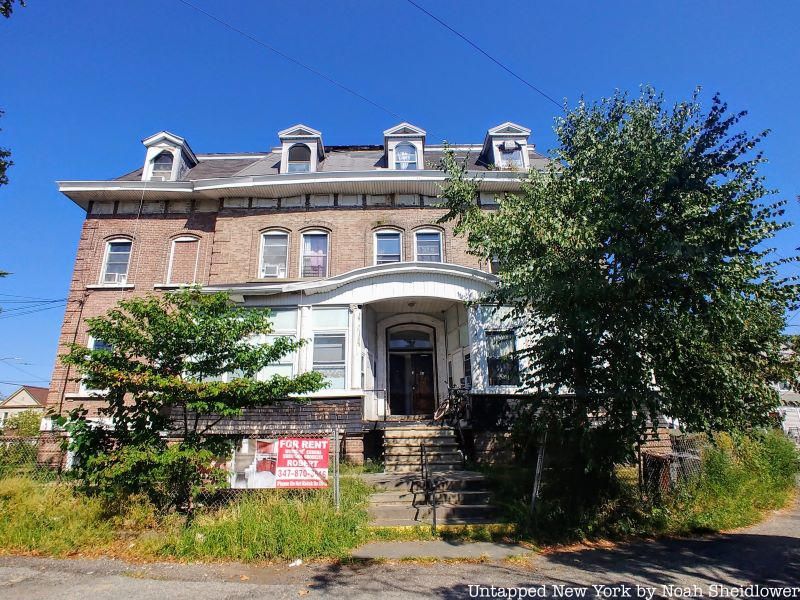
The traffic circle at 123rd Street and 13th Avenue is a bit of an anomaly: It’s just one building that happens to date back to 1857, but some records point to earlier. The building was the mansion of Herman A. Schleicher, a merchant who sold coal and hardware throughout his career. He also supposedly supported the South during the Civil War and used his home to give guns to Confederates. Schleicher befriended Poppenhusen, and his wife Marina purchased 14 acres of land from Poppenhusen’s associate Herman Funke, where the mansion would be built. The home was built by Morris A. Gescheidt, who also designed Poppenhusen’s factory and likely the Poppenhusen mansion. The Italianate style home with elements of the French Second Empire style was one of the first in New York City (and likely the oldest surviving example) to have a Mansard roof, which was used widely in Renaissance and Baroque architecture.
Most of the homes in the area that took inspiration from the Schleicher estate, though, were torn down or altered over the past 100 years. After Schleicher passed away, his wife sold it to a State Commissioner. By 1892, John Jockers purchased the home and converted it into the Grand View Hotel, with views of the East River and Flushing Bay. The hotel was short-lived and was later divided into apartments. The home is one of the oldest properties still standing in this part of Queens, and New York City street enthusiasts can easily see why. The building was constructed before the College Point street grid was laid out, so planners designed a traffic circle surrounding the home to maintain the grid pattern.
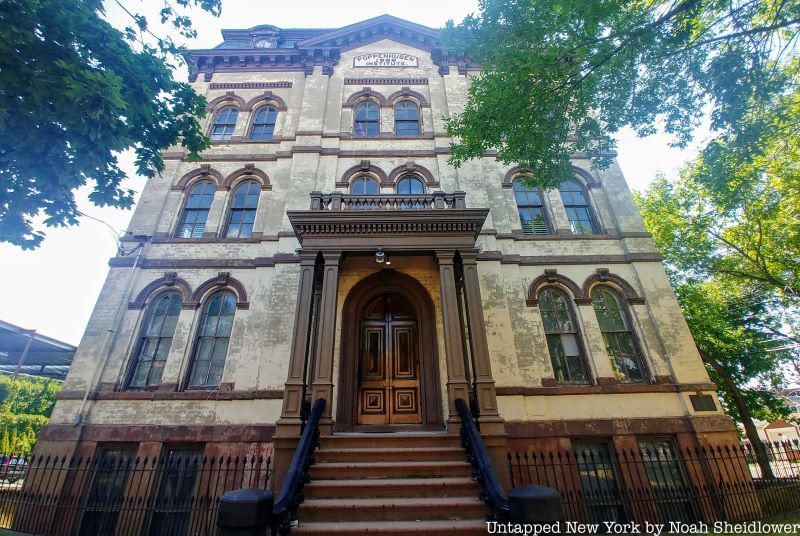
Conrad Poppenhusen was a German American businessman and philanthropist often considered the father of College Point. Born in Hamburg, Poppenhusen came to the United States and started a whalebone processing plant in Brooklyn, which he moved to a rural village in Queens. After bringing together the communities of Strattonport and Flammersburg, Poppenhusen helped build housing developments, streets, and the First Reformed Church. One of his major projects was the Flushing and North Side Railroad, which connected College Point to ferries taking passengers to Manhattan. In 1870, he created the country’s first free kindergarten at an institution that revolutionized the neighborhood.
The Poppenhusen Institute had just about everything the community needed: a church named the Justice of the Peace, the kindergarten, the neighborhood’s first library, the first branch of the College Point Savings Bank, a courtroom and Sheriff’s office, and many adult education programs. Poppenhusen hoped that everyone in the community regardless of background could achieve success, and for many, the opportunities at the Institute led them to open their own businesses. Just a few years after opening the Institute, Poppenhusen retired, and much of his fortune was lost due to poor financial decisions. Regardless, the Institute still operates today as a community cultural center with a museum. Poppenhusen Avenue, in addition to a small park nearby and the College Point library, honors his legacy.
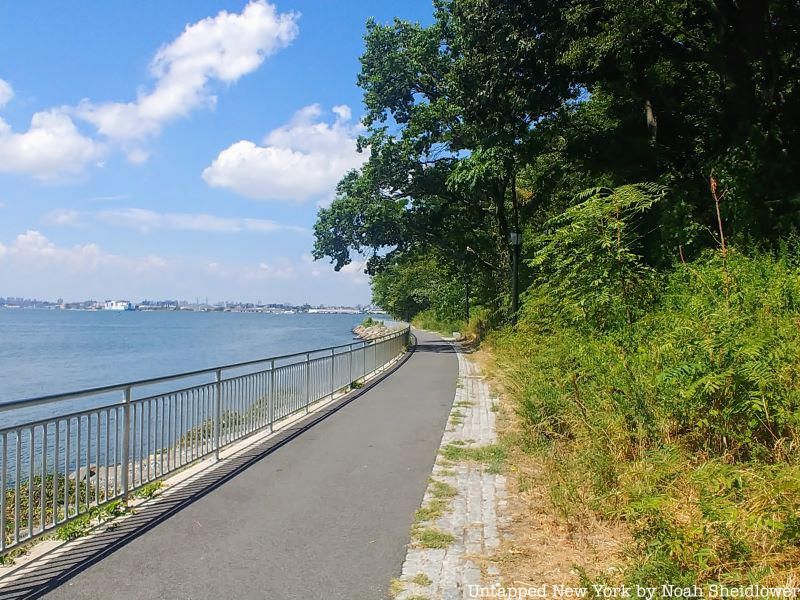
Hermon Atkins MacNeil, who names a park in College Point and lived and worked in the neighborhood, was an American sculptor who designed the Standing Liberty quarter, which was minted from 1916 to 1930 after the Barber quarter. After spending time teaching at Cornell University and studying in Paris, MacNeil helped in the preparation of sketches for Chicago’s Columbian Exposition in 1893. He turned his focus to sculptures of Native Americans for events like the Louisiana Purchase Exposition in St. Louis, and he also created a monument to William McKinley in Columbus, Ohio.
MacNeil’s design for the quarter showed Liberty standing with a shield to defend herself from an impending attack. The front of the coin depicted a flying eagle. However, Mint officials made changes to the design without telling him, leading to some modifications. The coin was later replaced by the Washington quarter, featuring a side profile of Washington to commemorate the 200th anniversary of his birth. After gaining fame for his design, MacNeil would go on to compete in art competitions at the 1928 and 1932 Olympics, and he also designed Justice, the Guardian of Liberty for the U.S. Supreme Court building. MacNeil’s artworks are found in other boroughs as well, such as his Washington as Commander-in-Chief at the base of the Washington Square Arch, a cast of Sun Vow at the Pratt Institute, the Flushing War Memorial in Queens, and four busts at the Hall of Fame of Great Americans at Bronx Community College.
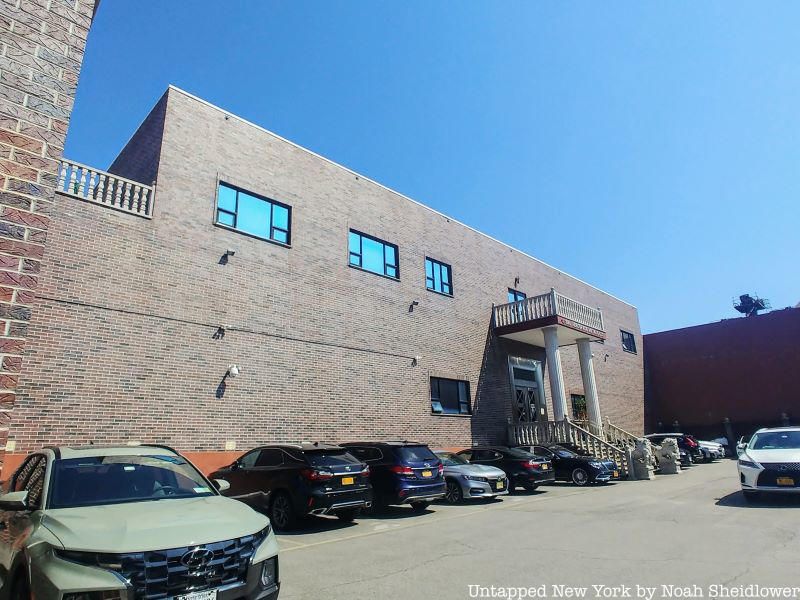
College Point houses an aerospace factory called S&L Aerospace Metals, which manufactures materials for companies like Boeing, Raytheon, and Helicopter Support. Founded in 1945 as a Brooklyn bicycle shop, the company shifted over the years to hydraulics for both commercial and military aircraft parts. All of S&L’s operations are conducted inside the facility and are mostly human-operated, including everything from masking to grinding. According to the company, employees supply “hard-metal, fracture-critical structural parts, components, sub-assemblies, assembly kits, and assemblies for the commercial, military, regional jets, business jet and helicopter segments.”
Many of the company’s employees are local, and S&L made the decision to stay in New York for their employees despite offers for bigger facilities in states such as New Jersey. The company recently expanded by over 100,000 square feet, allowing it to continue operations for leading aerospace clients nationwide.
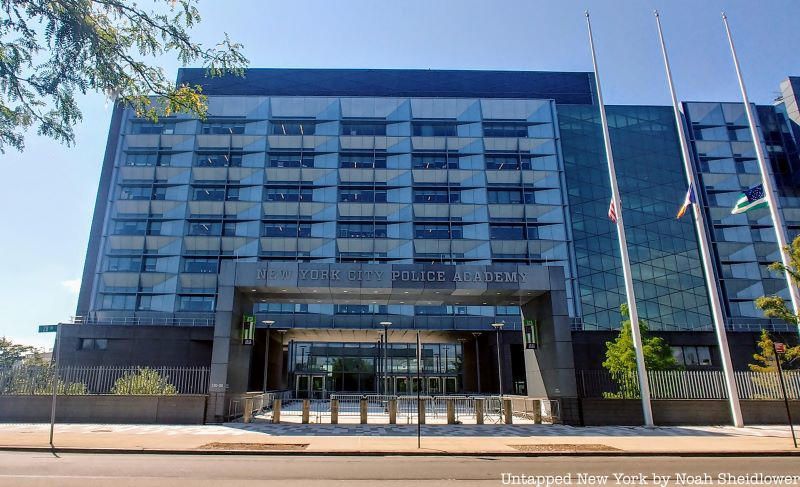
The New York City Police Academy is located in College Point, next to the College Point Multiplex. Construction began in 2009 on the new College Point facility, and Phase One opened in 2015. The first Police Academy opened in 1964 in Manhattan’s Gramercy Park neighborhood, though space issues and the building’s decline led to a search for a new location. Plans were released for a new location in the South Bronx, though Mayor Guiliani canceled everything in the works, meaning the search was on again. It took nearly two more decades for plans to be completed for a more modern facility. Though the developers ultimately selected a 35-acre tract in College Point, seven other sites, including Flushing Airport and other abandoned sites like Floyd Bennett Field, were also considered.
Located at 130-30 28th Avenue, the campus cost $950 million and consists of three buildings, including an eight-story structure with plenty of classroom and office space. There is also a “physical and tactical training” building with mock courthouses and subways, as well as a separate swimming pool and gymnasium.
Next, check out 17 hidden gems in Flushing, Queens!
Subscribe to our newsletter